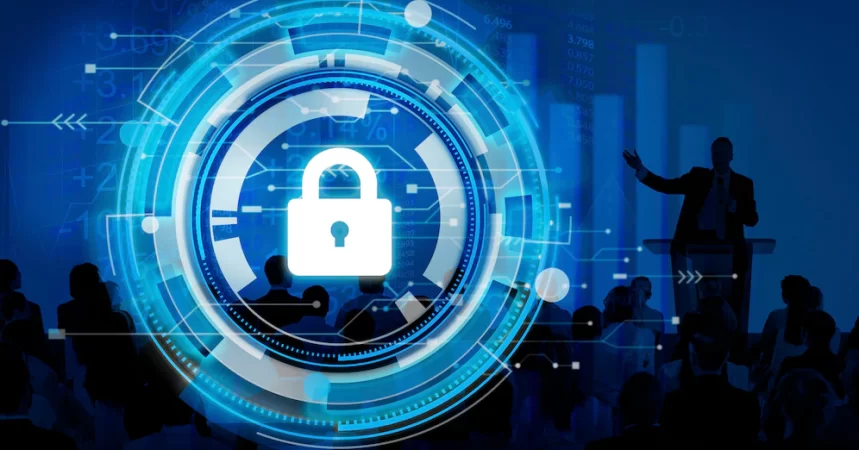Igaony: Guide for Anonymous Instagram Story Viewing
Subhasree Nag, 5 hours ago

Technology has enabled businesses to improve their operations and processes in the modern world, resulting in better services and products. Unfortunately, its drawback includes the security risks resulting in data breaches, loss, and damaged hardware.
Failure to mitigate the security risks brought on by technology often negatively impacts businesses, primarily with the hardware replacement expenses that may have been avoided.
Alongside this, network breaches also harm consumer perception of your brand, consequently losing their trust as you store their valuable data and information.
Thus, your organization must maintain network security while mitigating all possible risks and remaining compliant with data privacy and security regulations. Doing so may always involve utilizing the best and latest technology that caters best to your organization and often improving your cybersecurity strategy.
Besides this, you’ll also want to use the best practices as this becomes a valuable extra layer of protection against the cyber threats that your networks face.
To learn more about how network security works before moving on to crucial practices, this KM Tech resource is very useful. Consider reading the following list to find out more about the essential modern practices for network security:

The first essential practice for improving network security is regular network monitoring. As data is received and transmitted through your networks, cybercriminals often use this to access your systems and gain information.
Furthermore, using tools like the PRTG OPC UA server, companies can effectively supervise and control their IT systems.
By monitoring your network regularly, you’ll be able to determine whether your systems are leaking sensitive data and information. Regular monitoring will discourage staff from disclosing classified information about you and your clients.
Beyond that, network monitoring can also detect if changes to your system, such as making a user admin and modifying the security clearance of accounts, are being made.
Consider regularly testing your systems for vulnerabilities. This process first involves identifying the assets you wish to protect and recognizing which are most important.
The next step would involve identifying the threats and vulnerabilities to those assets. To further strengthen this process, becoming familiar with a penetration testing guide can contribute to a robust cybersecurity strategy.
Testing for vulnerabilities will help you identify the flaws in your system. Then you’ll know how to update it by patching the vulnerabilities and further fortifying your network.

The following essential practice would be to back up your data frequently and regularly. Regardless of how foolproof your network security systems are, it would help if you were always prepared for the possibility that a cyberattack would be successful and cause data loss.
By backing up your data and your clients, you mitigate the consequences of any data loss occurring. The disaster recovery plan is the term by which this procedure may be better known to you.
You’ll find that a disaster recovery plan will help resume operations quickly after an attack. Furthermore, it’ll help reduce downtime costs and improve your organization’s chances of survival.
When preparing to implement a regular data backup plan, you’ll find that you have various options for storage. Some include offline storage, such as external hard drives and removable flash drives, while others may be in the form of an external cloud that stores a second copy of all necessary data.
Understanding which suits your organization best or if you can afford to use various kinds will improve your disaster recovery plan’s efficacy.
Read Also: How To Become A Cybersecurity Analyst [Full Guide 2021]

The third practice that your organization should consider is regularly conducting staff cybersecurity training. It’s well established that ensuring the security of your company’s systems is in the hands of your IT staff, cybersecurity tools, and your users.
In this case, those users are your staff with various access levels to your IT systems via their passwords.
Regularly conducting staff cybersecurity training can emphasize the importance of proper cybersecurity practices when using electronic devices. You’ll also equip them with several ways to help protect the company’s IT systems through reasonable cybersecurity practices such as the following:
One example is teaching staff to create secure passwords along with updating or changing those passwords regularly. By having secure passwords and regularly changing them, intruders are less likely to gain access to your systems through their accounts.
Phishing scams are when cybercriminals create emails with links to another site requesting account login details. However, as these websites aren’t from the actual site and are just a recreated version, the details instead go to them, and they gain access to your accounts. Fortunately, several telltale signs, such as unique URLs, design mistakes, and more, will allow you to detect these and avoid becoming a victim.
Two-factor authentication helps prevent intruders who have gained your password and username details from accessing your account. Two-factor authentication will require the user to verify their identity in various ways after entering valid login details.
These identified verification methods may include approving the login attempt from another device, inputting a code via SMS or email, scanning a QR code using another device, and more.

Another practice to maintain is updating your software and systems regularly. Hacking into software and systems can often be seen as a maze wherein, at some point, a hacker may eventually get in.
However, regularly updating your systems makes it more difficult for cybercriminals to find vulnerabilities and points of entry into your software. Thus, your organization must periodically update its software.
While technology has enabled businesses to make more data-driven decisions and improve the services and products they offer, it also comes with drawbacks, such as cyber threats. Fortunately, there are various ways your organization can combat and mitigate these risks of data breaches, loss, hardware damage, and more.
One effective way would be to maintain the essential practices for network security, such as those listed above. Consider applying some or all of the methods to improve your network security.
Read Also:
Abdul Aziz Mondol is a professional blogger who is having a colossal interest in writing blogs and other jones of calligraphies. In terms of his professional commitments, he loves to share content related to business, finance, technology, and the gaming niche.

Subhasree Nag, 6 hours ago